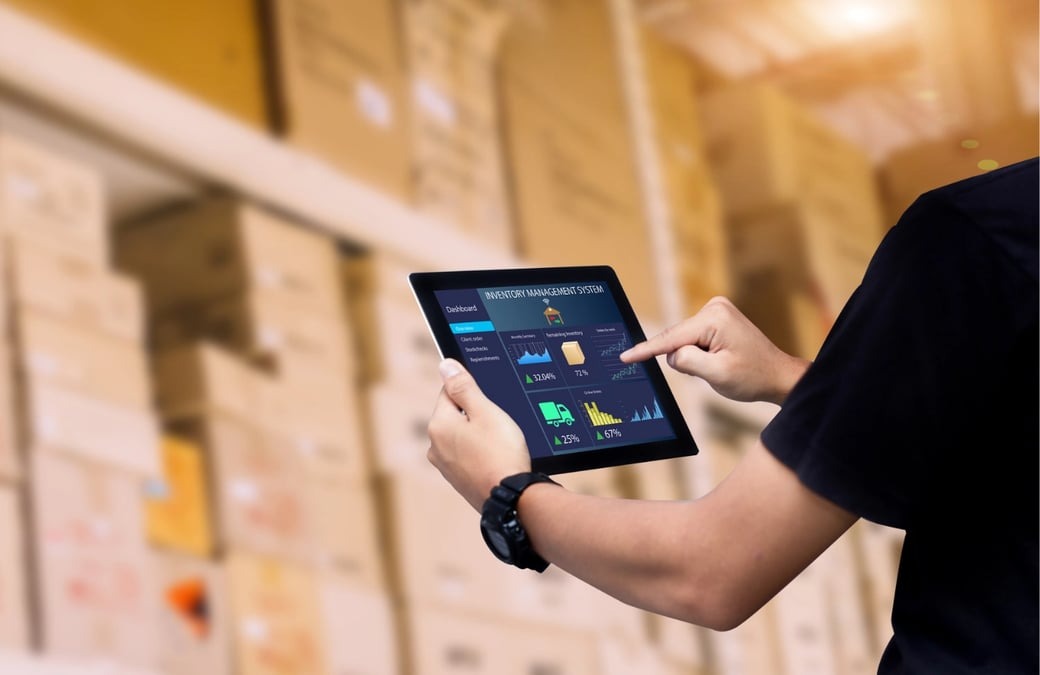Turning a hobby into a profitable hustle is the dream for many. Whether it’s crafting, painting, or even designing t-shirts, the idea of making money doing something you love is incredibly appealing. Among these creative ventures, starting a custom t-shirt line stands out as an exciting and accessible option. With the right guidance, you can transform your passion for design into a thriving business. This guide will walk you through the key steps of launching your own custom t-shirt brand, from market research to choosing the best printing techniques.
Understanding Your Market
Before you dive into designing your t-shirts, it’s crucial to understand the market you’re entering. The custom t-shirt industry is competitive, but there’s plenty of room for unique ideas and fresh perspectives. To carve out your niche, you’ll need to conduct thorough research and define your target audience.
Researching Trends and Niches
Start by exploring the current trends in the custom t-shirt market. Are there specific themes, graphics, or slogans that are popular right now? Trends can guide your initial designs, but it’s essential to add your twist to ensure originality. Look at successful brands and analyze what makes them stand out. Is it their design style, their message, or their customer engagement?
Finding a niche is just as important as following trends. A niche could be anything from eco-friendly t-shirts to designs catering to a particular subculture or interest group. The key is to find a balance between what’s popular and what’s uniquely yours. When you identify a niche, you position your brand to attract a specific group of customers who resonate with your style and message.
Analyzing Your Target Audience
Once you’ve identified potential trends and niches, it’s time to get to know your target audience. Who are they? What are their interests, values, and buying habits? Understanding your audience is crucial because it informs not only your designs but also your marketing strategies.
Start by creating customer personas. These are fictional characters that represent your ideal customers. Include details like age, gender, income level, hobbies, and shopping preferences. For example, if you’re targeting eco-conscious millennials, your designs and marketing materials should reflect sustainability and social responsibility. Knowing your audience helps you tailor your brand to meet their needs and preferences, making your t-shirts more appealing to the right people.
Building Your Brand Identity
With a clear understanding of your market and audience, you can start building your brand identity. Your brand is more than just a name and a logo—it’s the entire experience you offer your customers. It’s how your customers perceive you, and it’s what sets you apart from the competition.
Choosing a Name and Logo
The first step in building your brand is choosing a memorable name and creating a visually appealing logo. Your brand name should be unique, easy to pronounce, and reflective of your brand’s personality. It could be something playful, sophisticated, or edgy, depending on your target audience and niche.
Once you’ve settled on a name, it’s time to design a logo. Your logo is often the first thing customers see, so it needs to make a strong impression. Consider hiring a professional designer if possible, but there are also plenty of online tools that can help you create a polished logo. Your logo should be simple, versatile, and scalable, working well across different mediums, from business cards to t-shirts.
Creating a Unique Brand Voice
Your brand voice is how you communicate with your audience, and it should reflect your brand’s personality. Are you friendly and approachable, or are you more formal and professional? Your brand voice will come through in everything from your website copy to your social media posts, so it’s essential to be consistent.
To create a unique brand voice, think about the words, tone, and style that best represent your brand. For example, if your brand is playful, you might use casual language, humor, and emojis in your communications. If your brand is more serious, you’ll likely use a more formal tone. The goal is to create a consistent experience for your customers that resonates with them and builds trust in your brand.
Designing Your T-Shirts
Design is the heart of your custom t-shirt business. Your designs will attract customers and encourage them to make a purchase. But great design isn’t just about aesthetics—it’s also about quality and functionality.
Tools and Software for Design
Thanks to the digital age, you don’t need to be a professional graphic designer to create stunning t-shirt designs. There are numerous tools and software available that make the design process accessible to everyone. Adobe Illustrator and Photoshop are industry standards, offering robust features for creating high-quality designs. However, if you’re just starting, you might find tools like Canva or Procreate more user-friendly.
These tools allow you to experiment with different fonts, colors, and layouts. They also offer templates and design elements that can inspire your creativity. As you design, keep your target audience in mind. What kind of designs would they wear proudly? Whether it’s bold typography, minimalist graphics, or intricate illustrations, your designs should speak to the tastes and values of your customers.
Sourcing High-Quality Materials
Your designs might be incredible, but if your t-shirts aren’t comfortable or durable, customers won’t come back for more. Quality matters, and that starts with the materials you choose. Look for suppliers that offer high-quality fabrics, such as 100% cotton or a cotton-polyester blend. These materials are soft, breathable, and hold up well over time.
In addition to fabric, consider the quality of your printing methods. Different printing techniques will have varying impacts on the look and feel of your designs. High-quality printing ensures that your designs are vibrant and long-lasting, enhancing the overall appeal of your t-shirts.
Exploring Different Printing Techniques
Choosing the right printing technique is crucial to bringing your designs to life. Each method has its pros and cons, so understanding the options will help you select the best one for your business.
- Screen Printing: This is one of the most popular and cost-effective methods, especially for large orders. Screen printing uses a stencil (or screen) to apply layers of ink onto the t-shirt, creating vibrant and durable designs. It’s ideal for simple, bold designs with few colors.
- Direct-to-Film (DTF) Printing: A relatively new technique, DTF printing involves printing your design onto a special film, which is then transferred onto the fabric using heat and pressure. This method is versatile and can handle a wide range of fabrics, including those that are traditionally difficult to print on. The XL2 large format DTF printer is an excellent example of a machine that offers high-quality results, making it a valuable investment for those looking to scale their custom t-shirt business.
- Direct-to-Garment (DTG) Printing: DTG printing is perfect for intricate designs with multiple colors or gradients. It works like a regular inkjet printer but prints directly onto the fabric. This method is excellent for small batches and allows for high detail and color variation.
- Heat Transfer Printing: This technique involves printing your design onto a special transfer paper and then applying it to the t-shirt using heat. It’s great for on-demand printing and customization, as it allows you to produce a wide variety of designs without committing to large quantities.
- Embroidery: For a more premium look, embroidery adds texture and dimension to your designs. It’s a bit more expensive and time-consuming, but it’s ideal for creating a high-end product that stands out from the competition.
Each printing technique offers something unique, so consider your designs, budget, and business model when making your decision. Experimenting with different methods can also help you find the one that best suits your needs.
Setting Up Your Online Store
With your designs ready and your printing techniques selected, it’s time to set up your online store. Your store is where customers will discover and purchase your t-shirts, so it’s essential to make it as user-friendly and appealing as possible.
Choosing the Right E-commerce Platform
The first step is choosing the right e-commerce platform. There are several options available, each with its strengths and weaknesses. Shopify is a popular choice for its ease of use and extensive customization options. Etsy is another great platform, especially if you want to tap into a community of shoppers looking for unique, handmade products. WooCommerce is ideal for those who already have a WordPress site and want to integrate e-commerce functionality.
When selecting a platform, consider factors like ease of use, fees, and the ability to customize your store’s look and functionality. Your chosen platform should support your business goals and provide a seamless shopping experience for your customers.
Optimizing Product Listings
Once your store is set up, you’ll need to optimize your product listings to attract customers and encourage sales. Start with compelling product descriptions that highlight the unique features of your t-shirts. Focus on the benefits, such as comfort, durability, and the story behind the design.
High-quality product photography is also crucial. Customers can’t touch or try on your t-shirts online, so your photos need to convey the quality and appeal of your products. Use clear, well-lit images that show your t-shirts from multiple angles. Consider including lifestyle shots that show your t-shirts being worn in real-life settings, as these can help customers envision how they might look in your designs.
Marketing Your Custom T-Shirt Line
Now that your online store is live, it’s time to start marketing your custom t-shirt line. Effective marketing will help you reach your target audience and drive traffic to your store.
Social Media Strategies
Social media is a powerful tool for promoting your custom t-shirt line. Platforms like Instagram, TikTok, and Pinterest are particularly effective for showcasing visual products like t-shirts. Use these platforms to share your designs, behind-the-scenes content, and customer testimonials. Engage with your audience by responding to comments, asking questions, and running contests or giveaways.
Creating engaging content is key to building a following on social media. Consider posting regular updates, including new design releases, promotions, and collaborations. Use relevant hashtags to increase your reach and attract new followers who are interested in your niche.
Building an Email List
Email marketing is another effective way to promote your custom t-shirt line. Building an email list allows you to communicate directly with your audience, offering them exclusive deals, updates, and content. To grow your list, offer incentives such as discounts or free downloads in exchange for email sign-ups.
Once you have a list, send regular newsletters that provide value to your subscribers. Share insights about your brand, announce new products, and offer special promotions. Personalized emails can also help build a stronger connection with your customers and encourage repeat purchases.
Collaborating with Influencers
Partnering with influencers can help you reach a larger audience and build credibility for your brand. Look for influencers who align with your brand’s values and have a following that matches your target audience. Collaborations can range from sponsored posts and giveaways to co-designed t-shirts.
When working with influencers, it’s important to create mutually beneficial partnerships. Offer them something of value, whether it’s free products, a commission, or exclusive access to new designs. In return, they can provide you with exposure and authentic endorsements that resonate with their followers.
Managing Operations and Scaling Up
As your custom t-shirt line grows, you’ll need to manage operations efficiently and plan for future growth. This includes inventory management, customer service, and scaling your business to meet increasing demand.
Inventory Management and Order Fulfillment
Keeping track of inventory is essential to ensure that you can fulfill orders promptly and avoid stockouts. Invest in inventory management software that helps you monitor stock levels, track sales, and predict demand. As your business grows, you may also want to consider outsourcing order fulfillment to a third-party logistics provider. This allows you to focus on design and marketing while ensuring that orders are handled efficiently.
Handling Customer Service
Providing excellent customer service is crucial to building a loyal customer base. Respond promptly to inquiries, address any issues with orders, and make the return or exchange process as smooth as possible. A positive customer experience can lead to repeat business and word-of-mouth referrals, which are invaluable for your brand.
Planning for Growth
As your business expands, you’ll need to plan for growth. This could include offering bulk orders, expanding your product line, or even opening a physical store. Explore opportunities to collaborate with other brands, enter new markets, or create custom designs for events or organizations.
Scaling your business also involves continually improving your operations, marketing strategies, and customer experience. Stay open to feedback, keep an eye on industry trends, and be willing to adapt as needed to ensure long-term success.
Conclusion
Starting your own custom t-shirt line is a rewarding journey that combines creativity with entrepreneurship. By understanding your market, building a strong brand, and choosing the right printing techniques, you can turn your passion into a profitable business. As you grow, focus on delivering quality products, providing excellent customer service, and continuously refining your marketing strategies. With dedication and hard work, you can transform your hobby into a successful hustle.
Keep an eye for more news & updates on InternalInSider.Com!










